#taüll
Photo
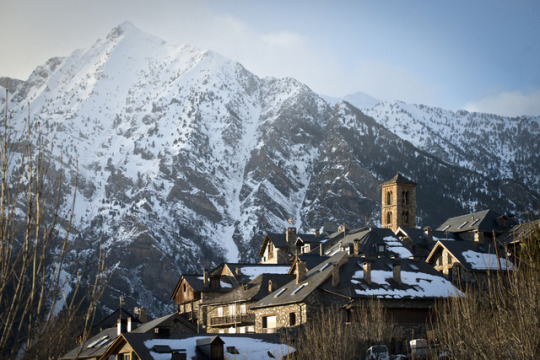
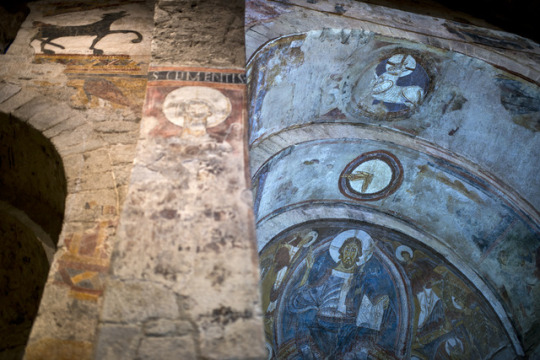
Taüll, a village in the Boí Valley (Vall de Boí) known for its Medieval churches and houses in the Catalan Romanesque style. Located in the High Pyrenees region of Catalonia.
Photos by Sofía Moro
#taüll#vall de boí#fotografia#arts#pintura#medieval#travel#snow#pyrenees#mountains#mountain#landscape#art#romanesque#painting#europe#european#village#town#wanderlust#explore#traveller#villagecore
84 notes
·
View notes
Text
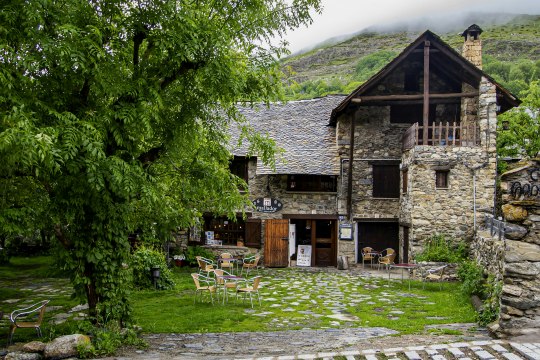

Taüll, Province of Lleida, Catalonia, Spain
Manuel Torres Garcia
2 notes
·
View notes
Text

Early Reconquista Christians adorned the Romanesque churches of the Pyrenees with precious murals like this seven-eyed Apocalyptic Lamb, painted around 1123 in Sant Climent church, Taüll, Catalonia. (From Giles Tremlett’s España)
5 notes
·
View notes
Photo

divine eye by joan.hassel https://flic.kr/p/2nstaj8
5 notes
·
View notes
Photo

Románico en Taull by #axelheyerphotographer #taüll #valldeboi #blancoynegro #blakandwhite #leica (en Taüll, Vall De Boí) https://www.instagram.com/p/CnPBAD8DIjx/?igshid=NGJjMDIxMWI=
0 notes
Text

Santa Maria de Taüll
Apse in the collection of MNAC in Barcelona
22 notes
·
View notes
Text


king arthur in llandaf cathedral (cardiff) and statue of saint gildas near the village of saint-gildas-de-rhuys (france), galahad by joseph noel paton and hand of god in a fresque in sant climent of taüll (catalonia)
[ID 1: a stained glass window focused on a man wearing gold scale armour with a blue sash. Next to it is the statue of a bearded bald man wearing robes. /end ID 1
ID 2: an oil painting of a young blond man on a horse. And angel is flying beside him giving off light. Next to it is a picture of a single hand emerging from a pale space surrounded by coloured rings. /end ID 2]
#king arthur#st gildas#galahad#arthur x gildas#galahad x god#arthuriana ship bracket#arthuriana#arthurian literature#arthurian legend
19 notes
·
View notes
Text




Taüll, agosto 2022.
19 notes
·
View notes
Photo

Knight of Swords. Art by Carmen Walker-Vazquez, from The Leeds Tarot Card Project.
“In terms of context for the design, I was heavily inspired by the 12th century frescoes in the church of Sant Climent de Taüll in Catalunya, Spain, particularly the fresco of the Lamb of God taken from the Book of Revelation, with seven eyes! The meaning of the Knight of Swords is quite ambiguous, suggesting bravery, aggression, passion and courage; yet reversed it could also imply violence, vulnerability and a stubborn or short-sighted individual. As a conflictive card, I found working on the design quite a challenge, and have made a number of different copies. I decided that the suffused and disorientating watercolour background set in contrast to the sharp black and white ink lines echoed this feeling of conflict and confusion, particularly in relation to the hot-headed figure of the Knight.”
#Carmen Walker-Vazquez#The Leeds Tarot Card Project#Knight of Swords#Knight#Swords#Minor Arcana#Tarot
4 notes
·
View notes
Video
youtube
Románico: tiempo - espacio en Sant Climent de Taüll
El Cristo en Majestad de la iglesia de Sant Climent de Taüll es uno de los símbolos del arte Románico. Estas imágenes no alcanzan a analizarse adecuadamente si solo pensamos en ciertos aspectos formales. Vamos a necesitar comprender la integración de las artes del Románico, qué pensaba el espectador medieval ante estas imágenes y cómo el uso de la ventana nos aporta otra ecuación por sobre la típica idea de la representación albertiana. El mundo Románico es metonímico antes que metafórico y eso nos obliga a replantearnos las herramientas para abordar este momento de la Historia del Arte.
0 notes
Text

En el nostre espai d'art tenim obra d'en Jaume Muxart (Martorell, 1922 - Barcelona, 2019) destacat pintor català, amb projecció nacional i internacional. Esposa per primer cop a la Sala Pictòria de Barcelona. L'any 1948 participa en l'Exposició Nacional de Belles Arts de Madrid i viatja a París becat per l'Escola Superior de Belles Arts. El 1955, juntament amb Marc Aleu, Modest Cuixart, Josep Guinovart, Jordi Mercadé, Antoni Tàpies i Joan-Josep Tharrats, constitueixen el grup Taüll. Doctor en Belles Arts, degà de la Facultat de Belles Arts de la Universitat de Barcelona i Acadèmic de la Reial Acadèmia Catalana de Belles Arts de Sant Jordi.
La seva pintura excel·leix pel color, la textura i la forma i ell ha influït molt en l'art català i espanyol, donant-li importància al que és la pintura.
El 2010 es remodelà l'antiga Casa Par de Martorell i s'hi construí el Museu Muxart, que recopila l'obra de l'artista. Mereixedor de diversos premis, al llarg de la seva intensa vida artística ha realitzat nombroses exposicions al país i a l'estranger i participà en la V Biennal de Sao Paulo representant Espanya.
x
1 note
·
View note
Text
Iconography: JC Part 1

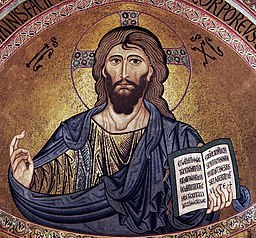


Christ in Majesty, fresco. Circa 1123. Master of Taüll. Apse of Sant Climent de Taüll Museu Nacional d'Art de Catalunya, Barcelona
Christ Pantocrator, mosaic. 1130. Cefalù Cathedral. Cefalù, Italy. 📷 Wikimedia Commons, Andreas Wahra, CC BY-SA 3.0
Christ in Judgment, tympanum, 1150. Abbey Ste Foy📷 Daniel Villafruela, CC BY-SA 3.0 via Wikimedia Commons
The Deesis mosaic, 1280. Hagia Sophia, IstanbuI, Turkey. Wikimedia Commons © JoJan, CC BY-SA 3.0
You've seen Him in frescos, mosaics, tympanum, paintings, illuminated manuscripts and more but do you know your Christ in Majesty from your Christ Pantocrator? The difference between Christ in Majesty and Christ in Judgment? What about the Christ Pantocrator and the Deesis?
Although sharing some similarities, the iconography of Christ differs between the Western Church and Eastern Orthodox Church.
The distinction comes from how both Churches interpreted the Heavenly throne described in The Book of Revelation and how those interpretations were then depicted in church architecture that developed in the East and West.
Early Christian art
Generally divided into two periods by scholars, early Christian art is bucketed into one of two camps: before and after either the Edict of Milan of 313 (whereby Christians were legally protected from persecution) or the First Council of Nicea in 325 (where Constantine I called for a meeting of all the Christian bishops to try to define Christian doctrine for all their followers around the Empire).
One of the major reasons for convening the council was major questions was around Christology. Specifically, what was the relationship between God the Son and God the Father. This concept is confusing and needed some consensus for sure (spoiler- was not figured in 325).

Regardless of the marker, once Christians were able to freely express themselves and their ideas about God in overt ways, a process began where the underground (literally in the catacombs), indirect symbols and ambiguous iconography of a persecuted people would evolve into mainstream icons for the all the world to see.
How would older symbols continue to be used? What new ones would develop? And, of course, where would Christians put them all?
Brief Christian History timeline
313 - Edict of Milan
325 - First Council of Nicea
324 - Constantine makes Byzantium the new capital of Roman Empire
330 - Byzantium becomes Constantinople
380 - Christianity becomes the state church of the Roman Empire
Late 5th century - collapse of the Western Roman Empire
Roman Empire 379-1453

Christian architecture
Christians would model their places of worship on the basilica, originally a large multi-functional public building in ancient Rome. The design of the original basilica was a rectangle shape with a longitudinal nave with an apse on one end (there could be more) and a roof with two levels, the higher roof in the middle to allow for a clerestory above.
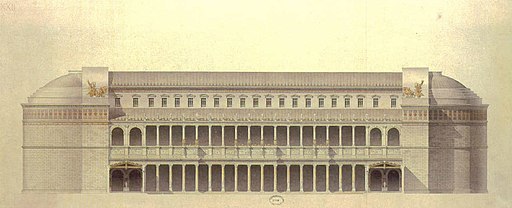
19th century reconstruction of the 2nd century AD Basilica Ulpia, part of the Trajan's Forum, Rome. Julien Guadet, prix de Rome, Public domain, via Wikimedia Commons
The basilica quickly became the template for a standardized architecture of Christian worship, the church. Specific features would Christianize for the church's needs, like the apse. In a civil basilica for example, the apse was the place where officials would congregate and where the Emperor would sit, in the Christian basilica it would become the place above the altar, where Jesus would be depicted. As time went on, the two Churches would use the space in ways that would effect the Christian art made inside.

Basilica of Sant'Apollinare in Classe near Ravenna, Italy, 6th century. Angela Rosaria, CC BY-SA 3.0, via Wikimedia Commons
Christian art
The various versions of Christ would gradually take form inside these churches, birthing the predecessors of the standardized iconography that would become the Christ in Majesty and the later Christ in Judgement and the Deesis and Christ the Pantocrator.
By the 4th, 5th and 6th centuries, the change was underway. It is as if artisans were thinking out loud on how to interpret the Old and New testaments, their images of a personified Jesus could be depicted in various ways - as a young, short haired, beardless, law giver, shepherd or even a warrior as well as bearded, long-haired and older, like the version standardized today.
Young, beardless Christ

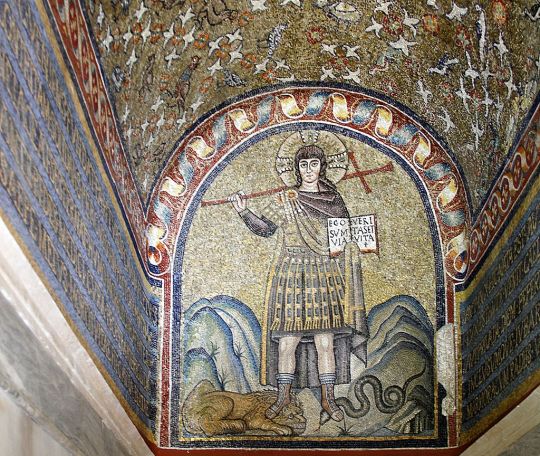
[Left] Christ the Lawgiver. Basilica of San Lorenzo, Milan, Italy. 4th century. Wikimedia Commons © Giovanni Dall'Orto
[Right] Christ treading the beasts. Chapel of Saint Andrew, Ravenna, Italy. 6th century. Wikicommons © José Luiz Bernardes Ribeiro
The mosaics above reflect important symbols and ideas of the time. In Christ the Lawgiver, Jesus is surrounded by his disciples. He is beardless, donning a golden halo. He is dressed in a white and gold toga and seated on a throne dais with his feet on a stool. His left hand holds the New Testament and raising his right hand (this right hand would have a number of meanings- from a gesture made to signal the right to speak, a gesture made by Emperors handing over a decree, to teaching gesture and finally becoming a gesture of blessing).
In Christ treading the beasts, Christ is alone, beardless, his head is surrounded by a golden four-armed cross halo. He is dressed in royal purple for battle, standing and stepping on the heads of the lion and the serpent. He is holding the Gospel with his left hand and grasping a large cross that rests on the shoulder, ready to take on any evil that may come his way.
In both cases, a young, beardless and haloed JC is taking on the appearance of a particular message the patron wants the artist to deliver to its audience.
Early Christian art was heavily influenced by Roman art and therefore the art that had influenced Rome, the art of Ancient Greece and thereby Greece's own influences - Egyptian, Mesopotamian and Persia art.
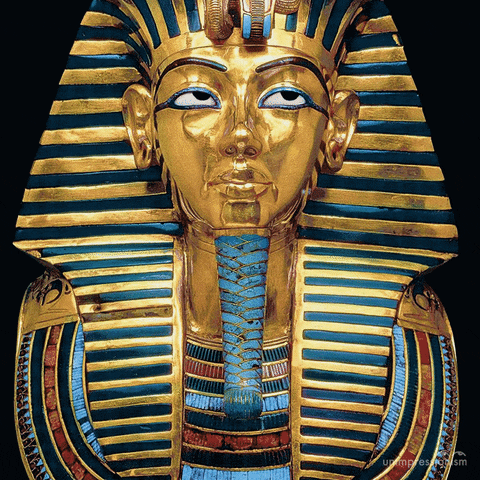
All cultures and religions take from and build upon the cultures and religions that came before them, adapting stories and visual language to suit their needs and the stories they want to tell.
If young strong Greco-Roman gods were portrayed as young and beardless, it would make sense for artists to show Christ in this way too. If deities in Ancient Egypt and Greco-Roman gods were depicted with halos/auras, Christ most certainty should too.
In the Lawgiver Christ, we see an emperor at the Forum with all other senators surrounding him. In Christ treading on beasts in Ravenna, we see a Christ in battle, triumphant against the hoards of pagan Germanic tribes to Ravenna's North or the defeat of Arianism within the Church itself.
Older, bearded Christ
The following image is said to be one of the earliest bearded Christ depictions which is now the prevailing, mainstream image we have come to know. Here Christ is fully bearded Jesus with long hair and a halo. This image emerged around 300, but it did not become established until the 6th century in the East and much later in the West.

Bust of a Bearded Christ, Catacombs of Commodilla, Rome, Italy. Late 4th Century. Wikimedia Commons, © Public Domain
Art historians point out several possible reasons why the now conventional images of Christ are bearded. Some like Paul Zanker surmise that this version is a reflection of Zeus, the King of Roman Gods and the look of the classical Roman philosophers. It would seem to me that most adult men had beards at the time. Certainly maybe, a 33 year old, Jesus probably would not have been clean shaven.
But how do we go from the above Jesus to Christ in Majesty, Christ in Judgment, Christ Pantocrator and the Deesis?
To be continued in a future post...

Sources
Depiction of Jesus
Early Christian art and architecture
Christ in Majesty
#christ in majesty#christian art#romanesque#christian iconography#art history#iconography#mosaic#architecture
0 notes
Text

Taüll, Province of Lleida, Vall de Boí, Catalonia, Spain
Manuel Torres Garcia
1 note
·
View note
Text
0 notes
Text
Esquiaren.com

Las estaciones de esquí se han convertido en destinos turísticos muy populares en todo el mundo, especialmente durante la temporada de invierno. En España, contamos con una gran variedad de estaciones de esquí que ofrecen pistas de alta calidad y servicios de primera categoría para los amantes de este deporte.
Si eres un apasionado del esquí o quieres probarlo por primera vez, las estaciones de esquí son el lugar perfecto para disfrutar de la belleza de la montaña mientras practicas este emocionante deporte. Entre las estaciones de esquí más conocidas en España se encuentran Sierra Nevada, Baqueira Beret, Formigal, La Molina y Sierra de Béjar-La Covatilla, entre otras.
Sierra Nevada, ubicada en la provincia de Granada, es una de las estaciones de esquí más populares en España y cuenta con una infraestructura de primera categoría. Aparte de su amplia oferta de pistas, dispone de modernos remontes y servicios de calidad para garantizar la comodidad de sus visitantes. Además, Sierra Nevada es conocida por su larga temporada de esquí, que se extiende desde noviembre hasta mayo.
Baqueira Beret, situada en los Pirineos catalanes, es otra de las estaciones de esquí más destacadas de España. Con más de 150 kilómetros de pistas, Baqueira Beret ofrece una amplia variedad de niveles de dificultad, lo que la convierte en una estación perfecta tanto para principiantes como para esquiadores más experimentados. Además, cuenta con numerosos servicios como escuelas de esquí, alquiler de equipamiento y una excelente gastronomía.
Formigal, en el corazón del Pirineo aragonés, es otra estación de esquí que no te puedes perder. Con más de 150 kilómetros de pistas esquiables, esta estación es una de las mayores de España. Además, su amplia oferta de actividades fuera de las pistas como trineos, paseos en raquetas de nieve y snowpark hacen que sea una elección ideal para disfrutar en familia o con amigos.
La Molina, en la provincia de Girona, es la estación de esquí más antigua de España. Con más de un siglo de historia, La Molina es conocida por su encanto y su amplia oferta de pistas para todos los niveles. Además, cuenta con servicios adaptados para con discapacidad, convirtiéndola en una estación inclusiva y accesible para todos.
Sierra de Béjar-La Covatilla, en la provincia de Salamanca, es otra excelente opción si estás buscando una estación de esquí en el centro de España. A pesar de no contar con una gran cantidad de pistas, esta estación es famosa por su belleza natural y su ambiente tranquilo. Además, ofrece la posibilidad de practicar otros deportes de invierno como el snowboard y el trineo.
En resumen, las estaciones de esquí en España son destinos ideales para disfrutar del deporte Esquiar en Boí Taüll invierno. Ya sea que busques emoción y adrenalina o simplemente quieras disfrutar de la belleza de la montaña, estas estaciones ofrecen experiencias inolvidables para todos los niveles y gustos. ¡No dudes en visitar alguna de ellas y vivir una verdadera aventura en la nieve!
0 notes
Photo

Paseo por el valle by #axelheyerphotographer #taüll #valldeboi #blancoynegro #blakandwhite #leica (en Taüll, Vall De Boí) https://www.instagram.com/p/CnPAlQRjjl2/?igshid=NGJjMDIxMWI=
0 notes